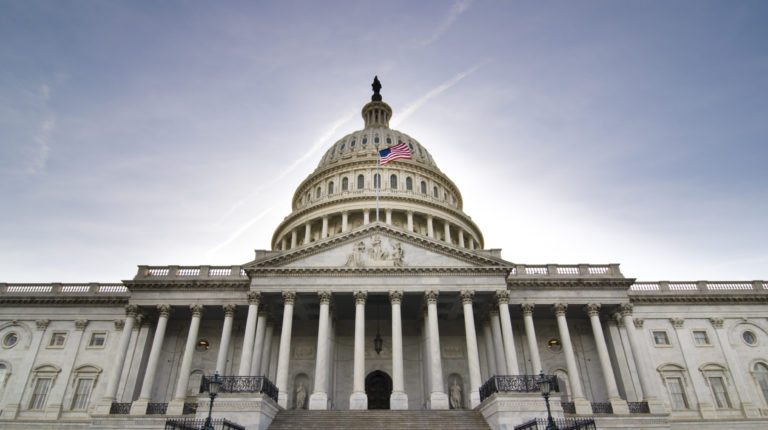When bringing together thought leaders and industry experts from both the public and private sectors, it’s not surprising that prominent themes emerge when discussing the modernization of government IT. At the 2017 Digital Nation Summit, presented by SAP and FedScoop, two topics of discussion among speakers and presenters were the most prominent: understanding the process of and how to facilitate IT modernization at an agency level, as well as ensuring the right personnel are in place to enable the switch.
Throughout the discussions there was an understanding that in order to modernize the federal government, leveraging newer technologies (such as cloud computing) is imperative, however this will not be an immediate change.
“We view modernizing government not really as a sprint or a marathon, but as a relay race,” said speaker Matt Lira, who serves as the special assistant to the President for innovation. “Because even if we were able to wave a magic wand and truly modernize the government in an afternoon—which we of course can’t do—within six months we’d have to modernize something [again] because technology is always changing.”
Lira continued by explaining that the best way to sustain progress toward government modernization is through collaboration. By bringing people together and building consensus around policymaking, movement can be made even if the parties involved have differing viewpoints.
“We’re seeing a really exciting collaboration between people who don’t always agree, but they’re able to come together and work on these problems,” said Lira. “Frankly, the conversations are that much stronger, not in spite of those difference but because of them.”
Democratic Rep. Dutch Ruppersberger mirrored Lira’s sentiment, citing the importance of collaboration with parties outside of the Beltway, also noting the technology gap between the private sector and federal government.
“What people don’t realize, [in] the United States of America, 80 percent of our network is controlled by the private sector,” said Ruppersberger. “So, we must have this partnership or relationship with government.”
Department of State (DoS) CIO, Frontis Wiggins, described steps he was taking to create an innovative and collaborative process of IT modernization within his agency specifically funding and the ability to act quickly when opportunity presents itself. To that end, DoS is establishing a new Customer Requirements Office that will meet with personnel on the ground to determine what types of solution are needed and to build it.
“We’re coming up with a metric and a weighting factor for all the IT projects and programs that are out there, and we’re going to rank order them, and we’re going to start doing triage,” said Wiggins. “And if there’s duplication, we’re going to start whacking in-flight legacy systems and programs, or cutting funding to those, and taking that and putting it into and IT innovation fund.”
By leveraging his powers in the Federal IT Acquisition Reform Act, Wiggins hopes to bring more of DoS’ $1.9 billion tech budget under his control. In turn, this will allow him to prioritize it for innovative uses, of which only a fraction of funding is currently spent. This process will permit DoS the opportunity to “fail fast” when testing innovative solutions, which it can then modify and deploy.
While many in the government would rather pursue a “get it right the first time” modus operandi, it’s not a sentiment shared by Chief Data Scientist & Director of Analytics at the EPA, Robin Thottungal.
During a panel discussion, SAP’s Michele Hovet raised the question of what best practices should be implemented when it comes to the adoption of IT modernization at agencies. In response,Thottungal encouraged the crowd to embrace a startup mentality stating, “it’s okay to fail.”
Collaborative processes and innovative approaches are largely dependent on those working to implement them and federal government is having a challenging time attracting this demographic that usually includes young, talented, tech savvy individuals.
These individuals, who tend to gravitate toward Silicon Valley type companies, are needed for modernization to occur in the federal space, which was noted by Sr. Director of Public Advocacy and New & Emerging Technologies at CompTIA, David Logsdon. In addition, he pointed out that the government workforce is an aging one, with 45 percent of its employees over the age of 50.
To entice young talent, Logsdon suggested embracing the modern and exciting ethos embodied by many of the country’s top tech firms. This approach includes creating more Advanced Research Projects Agencies, such as the Defense Advanced Research Projects Agency (DARPA) or the Advanced Research Projects Agency-Energy (ARPA-E). Additionally, he proposed that more government initiatives, such as the U.S. Department of Transportation’s Smart City Challenge, could incentivize those who seek more dynamic and ground-breaking work.
Ruppersberger, whose district houses the National Security Agency (NSA), further pushed this subject, noting that younger talent also offers an advanced skillset in combating cyber warfare, in addition to IT modernization. He also pointed specifically to NSA when referencing the lack of tech talent in the federal government, sharing the struggle of retaining technologically knowledgeable individuals.
“Cyber issues [are] so important to what we do—and that’s kind of keeping me up a little bit right now,” said Ruppersberger, citing an uptick in recent cyber-attacks against the U.S.
While Ruppersberger highlighted collaboration and innovation as steps to aid in the modernization of government IT, he placed strong emphasis on the need for education and early identification of talented personnel.
“We have to start looking in elementary schools and developing these children who do have the brainpower to do the things that we need to do in the cyber area,” said Ruppersberger. “[We] can do all we need to do to protect us, [but] it’s not going to be enough. . Innovation. Younger generation. Keep moving ahead. That’s the problem in our government right now. Our systems are so antiquated we’re not innovating.”
Undoubtedly, modernizing the entirety of the federal government is no small feat. However, thought leaders and industry experts from both the public and private sectors see a path forward with innovative and collaborative processes supported by young, talented, tech savvy individuals.
About the Author
 Alex Tzavellas serves as Practice Marketing Manager where he supports MIL’s cloud solutions marketing and sales efforts. He specializes in developing and executing strategies for federal and non-profit clients.
Alex Tzavellas serves as Practice Marketing Manager where he supports MIL’s cloud solutions marketing and sales efforts. He specializes in developing and executing strategies for federal and non-profit clients.
